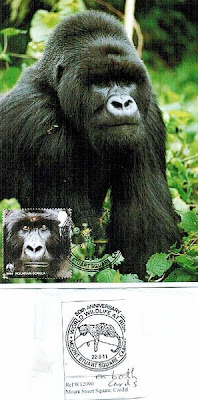"Baird’s Tapir (Tapirus bairdii) is a species of tapir that is native to Central America and northern South America.[2] It is one of three Latin American species of tapir.
Contents[hide] |
[edit]Names [MY NOTE: burro, cow, horse, big animal...]
Baird’s Tapir is named for the American naturalist Spencer Fullerton Baird[3] who traveled to Mexico in 1843 and observed the animals. However, the species was first documented by another American naturalist, W. T. White.[4] Tapir is the largest land mammal in Central America[5].
Like the other Latin American tapirs (the Mountain Tapir and the South American Tapir), Baird’s Tapir is commonly called danta by people in all areas. In the regions around Oaxaca and Veracruz, it is referred to as the anteburro. Panamanians, and Colombians call it macho de monte, and inBelize, where Baird’s Tapir is the national animal, it is known as the mountain cow.
In Mexico, it is called tzemen in Tzeltal; in Lacandon, it is called cash-i-tzimin, meaning “jungle horse;” and in Tojolab'al it is called niguanchan, meaning “big animal.” [MY NOTE: "big animal"?...Kinda vague...Then again, "this ain't no Africa"]
"An adult Baird’s Tapir, being such a massive mammal, has very few natural predators. Only large adult American crocodiles (4 metres / 13 feet or more) and adult Jaguars are capable of preying on tapirs, although even in these cases the outcome is unpredictable and, more often than not, in the tapir's favor (as is evident on multiple tapirs documented in Corcovado National Park with large claw marks covering their hide.)"
"Baird’s Tapir has a distinctive cream-colored marking on its face and throat and a dark spot on each cheek, behind and below the eye.
[MY NOTE: Look at the lower-left and lower-right images of postcards from maxicards. Do YOU see the DARK SPOT, even below the water line?
Now, look at the stamps.
Mister/Madam stamp designer, you MISSED A SPOT! :) ]
The rest of its hair is dark brown or grayish-brown.
The animal is the largest of the three American species and, in fact, the largest land mammal found in the wild from Mexico to South America.
Baird’s Tapirs average up to 2 metres (6.6 ft) in length and 1.2 metres (3.9 ft) in height, and adults weigh 150–400 kilograms (330–880 lb).[6][7]
Like the other species of tapir, they have small stubby tails and long, flexible proboscises.
They have four toes on each front foot and three toes on each back foot."
===============
Now, the other tapir apparently depicted in this set from Nicaragua.
"The South American Tapir (Tapirus terrestris), or Brazilian Tapir (from the Tupi tapi'ira) orLowland Tapir or (in Portuguese) Anta, is one of four species in the tapir family, along with the Mountain Tapir, the Malayan Tapir, and Baird's Tapir.[2] It is the second largest land mammal in South America, after Baird's Tapir."
"It is dark brown in color, paler in the face, and has a low, erect crest running from the crown down the back of the neck."
[MY NOTE: the crest stays like that for more than 4 hours; in fact, it stays like that forever...and ever...]
Now, look at the flip side.
Of the set of maxicards, that is.
Notice that the reverse of the upper-left maxicard front-side (see above), with the stamp value of 5 Nicaraguan córdoba, has the inscription South American Tapir (Tapirus terrestris) on the back (the upper-right in the image below, of the back-sides.)So, if the South American Tapir (Tapirus terrestris) does NOT live in Nicaragua/Central America, then that postcard is wrongly chosen, and 2 stamps (with seemingly crested tapir) are wrongly designed.
What do you think?
=======
DID YOU KNOW that they also speak SUMO in Nicaragua?
| Republic of Nicaragua República de Nicaragua | ||||||
|---|---|---|---|---|---|---|
| ||||||
| Motto: En Dios Confiamos (Spanish) "In God We Trust"[1] | ||||||
| Anthem: Salve a ti, Nicaragua (Spanish) Hail to thee, Nicaragua | ||||||
| Capital (and largest city) | Managua 12°9′N 86°16′W | |||||
| Official language(s) | Spanish | |||||
| Recognised regional languages | Creole, Miskito, Sumo and Rama | |||||
| Ethnic groups | 69% Mestizo 17% White (majority being of Western European ancestry) 5% Amerindian 9% Black[2 | |||||
=========
Happy Father's Day! (me, too!)
Happy Sunday Stamps meme!
Please visit: http://viridianpostcard.blogspot.com/


















.jpg)


.png)




















